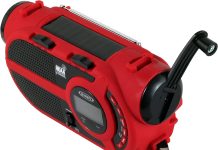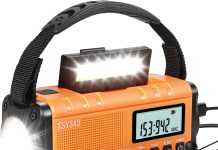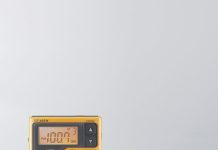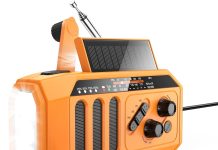Are you curious about what it takes for a hurricane to form? Well, buckle up because we’re about to take you on a whirlwind journey into the world of hurricanes.
In this article, we will explore the three key ingredients that a hurricane needs to brew up its destructive power.
Prepare to be fascinated as we uncover the secrets behind these natural phenomena that have captivated and terrified humanity for centuries.
So, grab your umbrella, and let’s dive into the fascinating world of hurricanes!
Review contents
Warm Ocean Waters
High sea surface temperatures
One of the critical ingredients for the formation and intensification of hurricanes is warm ocean waters. Hurricanes thrive on warm ocean surface temperatures, typically around 80°F (27°C) or higher. When the ocean’s surface is warm, it provides the necessary energy for the storm to grow and strengthen. The warm waters act as fuel, providing heat and moisture to the developing hurricane system.
Specific temperature range
While warm waters are essential for hurricane formation, the specific temperature range is also significant. The ocean surface temperature must be consistently warm over a large area to form and sustain hurricanes. A consistently warm temperature profile helps to maintain the energy and moisture needed for the storm’s development.
Warm waters prime for hurricane formation
Hurricanes form in regions with warm ocean waters, such as the tropical and subtropical regions. These warm waters create an optimal environment for tropical cyclones to form. As the warm air rises from the ocean surface, it creates an area of low pressure, further facilitating the storm’s development.
Moisture
Evaporation from warm ocean
Moisture plays a crucial role in the formation and intensification of hurricanes. Warm ocean waters facilitate the evaporation of water into the atmosphere. As the ocean surface heats up, the water molecules gain energy and transform into water vapor, which rises into the atmosphere. This process leads to an increase in atmospheric moisture content, providing a critical ingredient for hurricane formation.
Humid air masses
The evaporation of water from warm ocean waters leads to the formation of humid air masses. High levels of moisture content characterize these air masses. Moisture-laden air is a critical factor in providing the energy necessary for the formation of thunderstorms within a developing hurricane system.
Abundant water vapor content
Ab abundant water vapor within the atmosphere is pivotal for hurricane formation. When warm, moist air rises, it cools and condenses, forming clouds. This condensation process releases latent heat, further fueling the storm’s development. The continuous supply of water vapor from the warm ocean waters helps maintain and replenish the moisture content essential for sustaining a hurricane.
This image is the property of images.unsplash.com.
Convection
Rising warm air
Convection is a critical process in hurricane formation. As the warm ocean surface heats the air above it, the warm air rises due to its lower density. This rising warm air creates an area of low atmospheric pressure, drawing in surrounding air and moisture and forming the storm system.
Formation of thunderstorms
Within the developing hurricane system, convection leads to the formation of numerous thunderstorms. Convection is responsible for the vertical air motion in the atmosphere, allowing warm, moist air to rise and cooler air to sink. This vertical air motion within the storm system contributes to the storm’s growth and enhances its overall organization.
Unstable atmospheric conditions
Convection occurs in conditions of atmospheric instability, where the lapse rate (the rate at which temperature decreases with altitude) is steep. The instability arises from the warm air rising rapidly from the ocean surface, creating an unstable environment conducive to thunderstorm development. These unstable atmospheric conditions are vital for sustaining and strengthening a hurricane.
Low Wind Shear
Absence of solid wind patterns
Another critical factor for hurricane development is low wind shear, which refers to changing wind speed and direction with altitude. Hurricanes thrive in an environment with slight variations in wind patterns. Low wind shear allows the storm to remain vertically aligned and maintain its structure, facilitating its development and organization.
Limited variation in wind speed or direction
A consistent wind pattern with limited variation in speed or direction is favorable for the growth of hurricanes. It allows the storm system to maintain circulation and avoids disruption from strong winds that could weaken or disrupt the organization of the hurricane.
Allows for hurricane development
Low wind shear is crucial for hurricane development, allowing the storm system to organize and grow vertically. When wind shear is low, the rising warm air can stack on top of the storm system, creating a well-defined circulation and more efficient heat and moisture transfer. This promotes the intensification and sustenance of the hurricane.
This image is the property of images.unsplash.com.
Preexisting Disturbance
A trigger for tropical storm development
Preexisting disturbances in the atmosphere often trigger tropical storm formation, which can eventually evolve into hurricanes. These disturbances can stem from tropical waves, frontal boundaries, or converging winds. These initial disruptions set the stage for the development of a hurricane by creating regions of low pressure and varying temperature gradients.
Disturbance in atmospheric pressure
A disturbance in atmospheric pressure plays a crucial role in the formation of a hurricane. When there is a disturbance in pressure, such as a region of low pressure, it allows air to rise rapidly, promoting convection and the development of thunderstorms. This disturbance provides the initial conditions for a tropical system to strengthen and transform into a hurricane.
It often originates from tropical waves, frontal boundaries, or converging winds.
Various atmospheric phenomena, such as tropical waves, frontal boundaries, or converging winds, can be preexisting disturbances contributing to hurricane formation. These disruptions provide the necessary ingredients for a developing storm system, including instability, moisture, and the formation of thunderstorms. These disturbances often serve as catalysts for the birth and intensification of hurricanes.
Sufficient Coriolis Effect
Deflection of air due to Earth’s rotation
The Coriolis effect, a result of the Earth’s rotation, plays a crucial role in cyclonic rotation, a defining characteristic of hurricanes. As air moves from high to low pressure in the atmosphere, the Coriolis effect deflects the moving air to the right in the Northern Hemisphere and the left in the Southern Hemisphere. This deflection causes the air to rotate around the low-pressure center, initiating cyclonic rotation in hurricanes.
Causes cyclonic rotation of hurricanes
The Coriolis effect causes the rotational motion of hurricanes, giving rise to their unique cyclonic structure. As air converges towards the low-pressure center, the deflection caused by the Coriolis effect imparts a spinning motion to the storm system. This cyclonic rotation enhances the storm’s overall organization and intensification.
It only occurs in certain latitudes.
The Coriolis effect is most pronounced at higher latitudes and is virtually nonexistent at the equator. Therefore, hurricanes require a sufficient distance from the equator for the Coriolis effect to be significant and enable the cyclonic rotation necessary for hurricane genesis. This influence of latitude on the Coriolis effect also determines the typical tracks of hurricanes in different regions.
This image is the property of images.unsplash.com.
Lack of Vertical Wind Shear
Absence of rapidly changing wind speeds with height
In addition to low wind shear, hurricanes also require a lack of rapidly changing wind speeds with height. Vertical wind shear inhibits a storm’s ability to organize and intensify. Without strong shearing winds, the storm can maintain a more vertical structure, allowing for the efficient exchange of heat and moisture within the system.
Facilitates vertical organization of the storm
When vertical wind shear is absent, the hurricane system can stack the warm air on top of the cooler air, allowing for enhanced convection. This vertical organization of the storm system facilitates the development of a well-defined and more intense hurricane. The lack of wind shear promotes the consolidation of the storm’s structure and aids in its intensification.
Promotes hurricane intensification
Low vertical wind shear is crucial for hurricane intensification. It allows the storm system to maintain its vertical structure and prevents disruptive forces from weakening the storm. With consistent and low vertical wind shear, the hurricane can continue to draw energy from warm ocean waters, leading to intensified wind speeds and increased potential for damage upon landfall.
Persistent High-Pressure System
A stable atmospheric condition
A persistent high-pressure system in the surrounding environment of a developing hurricane creates a stable atmospheric condition. This stability allows the storm to maintain its structure and development without significant disruptions. A high-pressure system prevents the dissipation or weakening of the storm due to adverse environmental conditions.
Facilitates sustained hurricane development
When a high-pressure system exists, it creates a favorable environment for sustained hurricane development. The stable atmospheric conditions associated with high-pressure support the continued organization and intensification of the storm system. This sustained development ensures that the hurricane can reach its full potential and maintain its strength over an extended period.
Restricts dissipation of the storm
The presence of a persistent high-pressure system acts as a barrier that restricts the dissipation of the hurricane. This stable atmospheric condition prevents the storm from being weakened or disrupted by adverse external forces. As a result, the hurricane can continue on its path, potentially maintaining its intensity and posing a more significant threat to coastal areas.
Warm Air Aloft
Temperature inversion at upper levels
Warm air aloft refers to the presence of higher air temperatures in the upper levels of the atmosphere. This temperature inversion is instrumental in inhibiting the vertical development of the storm. It prevents the warm air near the ocean surface from rising too high and helps maintain the storm’s structure.
Inhibits vertical development of the storm
Warm air aloft acts as a stabilizing factor, inhibiting the storm from growing vertically. As warm air naturally rises, the temperature inversion creates a layer of warm air above the hurricane, which prevents further vertical development. This inhibition helps maintain the storm’s overall structure and prevents it from weakening or collapsing.
Allows for efficient heat transfer
Despite inhibiting vertical development, warm air aloft allows for efficient heat transfer within the hurricane system. This heat transfer is crucial for providing the necessary energy to fuel the storm’s growth. The warm air above the storm provides a continuous source of heat, contributing to the hurricane’s intensification and sustenance.
Sufficient Distance from the Equator
Required for Coriolis effect
As mentioned, the Coriolis effect plays a significant role in cyclonic rotation and hurricane formation. A hurricane must be located at a sufficient distance from the equator to observe a significant Coriolis effect. This requirement ensures that the deflection caused by the Earth’s rotation is significant enough to initiate and maintain cyclonic rotation within the storm system.
Facilitates cyclonic rotation
The distance from the equator determines the strength of the Coriolis effect and, thus, the ability of the storm to exhibit cyclonic rotation. In the Northern Hemisphere, hurricanes rotate counterclockwise, while in the Southern Hemisphere, they rotate clockwise. This cyclonic rotation is a defining characteristic of hurricanes, and the sufficient distance from the equator allows for this rotation to occur.
Influences hurricane tracks
The distance from the equator affects the Coriolis effect and influences the overall tracks of hurricanes. As hurricanes develop and move, their paths are influenced by the prevailing wind patterns and the Coriolis effect. The distance from the equator determines the dominant wind patterns and the general tracks that hurricanes follow in different regions.








































